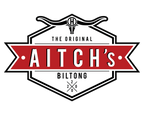The History of Biltong
In Asia, Biltong is a comparatively new kid on the block – especially when compared to the traditionally Cantonese cured meat and/or it’s similar Western counterpart, Jerky.
Looking at the history of cured meat, in South Africa, as in China, curing originated from a time when food couldn’t be easily obtained or stored, and preservation methods were not aided by modern technology.
In China, this way of preserving meat products have been used and referenced, for more than 2,000 years.

In Southern Africa, air-curing meat dates back to the 17th century with the arrival of European settlers who needed to find ways to make there protein stocks last longer. In the 19th Century, with the mass migration to the North (called The Great Trek), thousands of Dutch farmers used ox drawn wagons to move away from the British ruled Cape Colony, and to start fresh in new parts of Southern Africa.
This is where Biltong was born as a solution to a portable way to meat preservation. With a quick dip in vinegar and/or salt-pepper (potassium nitrate), and the addition of salt and pepper to taste, any type of meat that was found along their journey to the North could now be preserved and transported on the onward expedition.

Today, Biltong has been established as an iconic part of the Southern African history, present and future. This tasty meat snack is slowly growing across the world. Initially leaving footprints in the United Kingdom and Europe where it has now become an industry that is growing by the day. Crossing the Atlantic into the Americas with big companies seeing the amazing value and taste this new found snack can add to our protein repertoire.
The word Biltong in South Africa often is used as a collective term that is used to refer to a few different products:
- Biltong
- Droëwors
- Chilli Bites
- and many more!


